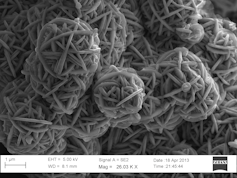South Africa’s Coal Reserves and the Challenges of Fly Ash
South Africa is rich in coal resources, which play a significant role in the country’s energy landscape. The nation’s heavy reliance on coal is evidenced by its 13 coal-fired power plants, primarily located in Mpumalanga, a province known for its extensive mining activities. These power plants convert coal into electricity, making South Africa one of the largest coal consumers in the world.
However, this dependence on coal brings with it a plethora of environmental challenges. Annually, South Africa generates about 36 million tonnes of fly ash, a solid byproduct of coal combustion. To put this into perspective, that’s equivalent to six immense dumps, each as large as the Great Pyramid of Giza. The composition of South Africa’s lower-grade coal contributes to this significant fly ash production, as up to 40% of the coal can end up as ash upon combustion.
The Dangers of Fly Ash
Fly ash is composed of extremely fine particles that are not only abrasive but also corrosive. Within these particles are various toxic metals and soluble salts, which can leach into the environment, making them a troubling pollutant for both surface and groundwater. Furthermore, inhalation of these particles poses significant health risks to humans, as they contain harmful metals like mercury and chromium that can lead to serious health issues, including respiratory problems and other chronic conditions.
In South Africa, the disposal method for fly ash primarily involves the use of irrigated ash dumps or dry dumps. Unfortunately, the chemical weathering of these dumps results in leaching, increasing salinization in nearby water bodies—rivers, lakes, and dams—which can have disastrous effects on local ecosystems and water quality.
Innovative Solutions to Fly Ash Management
Recognizing the environmental risks posed by fly ash, South Africa has embarked on extensive research regarding its disposal, management, and potential reuse. Studies indicate that the vast quantities of fly ash produced at power stations can actually be converted into value-added products. This dual approach not only diminishes the environmental hazards associated with fly ash but also creates new economic opportunities in the form of useful materials.
Uses for Fly Ash
A key application of fly ash lies in addressing the pervasive issue of acid mine drainage. Acid mine drainage occurs when water interacts with exposed pyrite or sulphidic rocks, generating sulphuric acid. This acidic solution releases toxic metals into the surrounding environment, affecting streams, rivers, and even aquatic life.
Interestingly, fly ash can effectively neutralize and treat acid mine drainage by mixing contaminated water with fly ash or utilizing gravity flows through ash beds. Research has demonstrated that this treatment method can significantly reduce toxic metals and sulphates, thereby improving water quality to meet standard guidelines suitable for irrigation or even drinking.
Furthermore, the solid residuals from treated fly ash can be repurposed to backfill mine voids post-extraction, effectively preventing the reformation of acid mine drainage by keeping air and water out.
Exploring the Next Frontier in Fly Ash Recycling
Beyond treating acid mine drainage, fly ash is a treasure trove of potential. Comprising a large percentage of silica (48.27%) and aluminium oxide (30.89%), fly ash can be transformed into zeolites. These remarkable minerals boast excellent stability at elevated temperatures and pressures, making them invaluable in various industrial applications.

Leslie Petrik
Various types of zeolites, including zeolite A and zeolite X, derived from fly ash have been successfully produced for numerous applications. Zeolite A is commonly used in domestic products such as laundry detergents, while others have shown promise as catalysts in biodiesel production, lowering temperatures and costs significantly in the processing stage. Additionally, these zeolites can remove toxic metals from polluted water, purifying it for safer use.
Other exciting prospects for fly ash include its potential as a source of rare earth elements and in the development of geopolymers. This innovative material can act as a sustainable, durable alternative for concrete in the construction industry, demonstrating the broad scope of applications for fly ash.